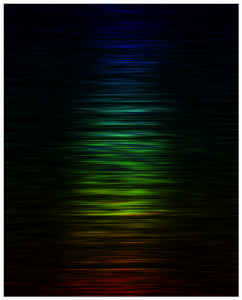
The radio pulse FRB 150807
The colour shows the frequency of the waves, which is like the colour of light. The brightness varies with frequency due to a process termed “scintillation”, which is caused by the twinkling of the burst in the cosmic web. This scintillation is the fingerprint of turbulence in the cosmic web and tells us that web is very placid.
Credit: Dr Vikram Ravi/Caltech and Dr Ryan Shannon/ICRAR-Curtin/CSIRO
Fast Radio Bursts (FRBs) are a newly discovered population of millisecond-timescale transient events. Their origin is unknown, but they are thought to emanate at cosmological distances, making the observed emission from these events extremely luminous. In this project you will use data from the CRAFT survey on the Australian SKA Pathfinder (ASKAP) to analyse data from detected Fast Radio Bursts, and reconstruct their arrival directions.
The project will involve using the Pawsey supercomputer to analyse data from the Commensal Real-time ASKAP Fast Transients (CRAFT) survey for FRBs. You will visually inspect and de-disperse the data, and correlate data from different antennas. This will produce the FRB arrival directions, which hold the key to identifying the host galaxy, and understanding what is producing these rare events.

